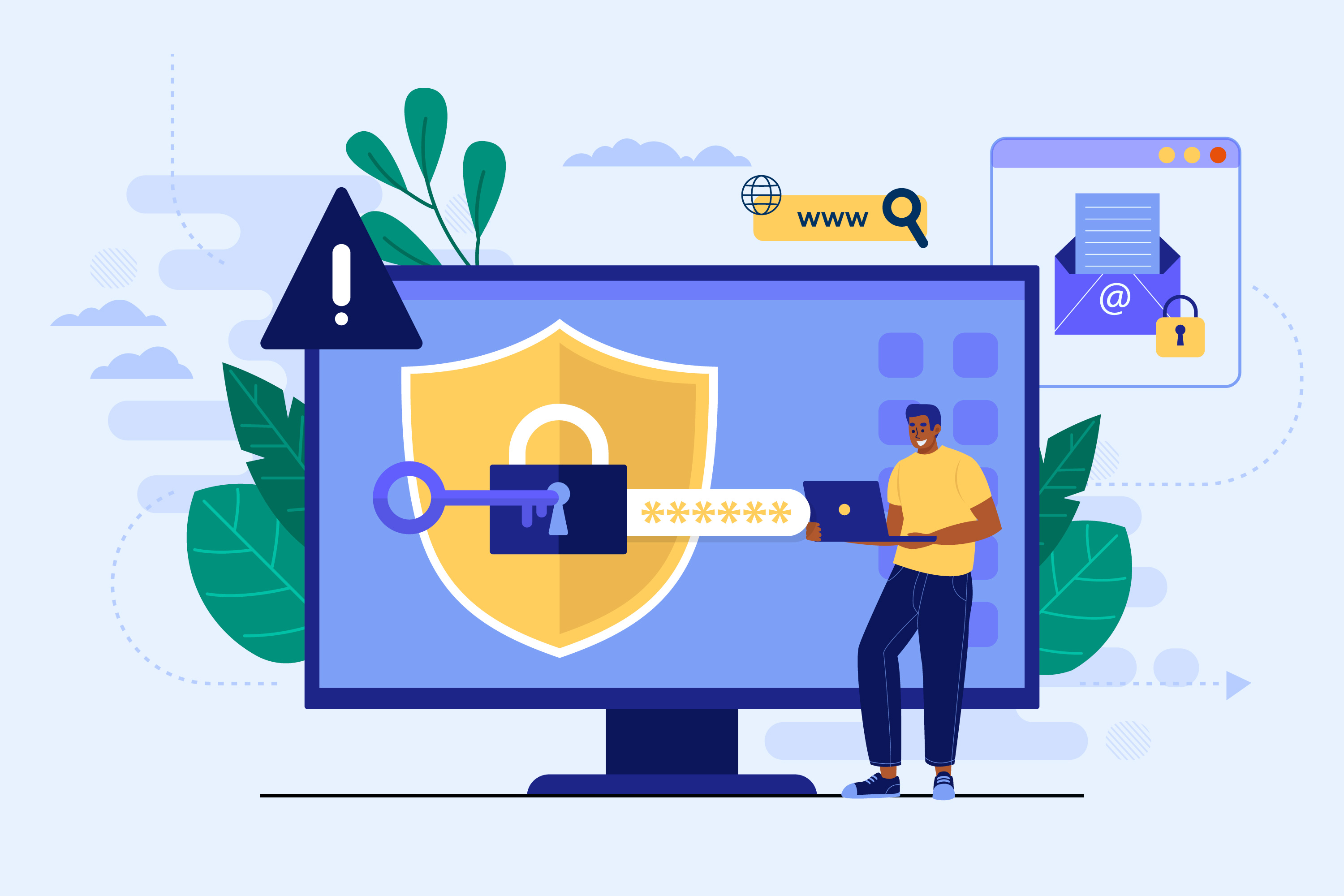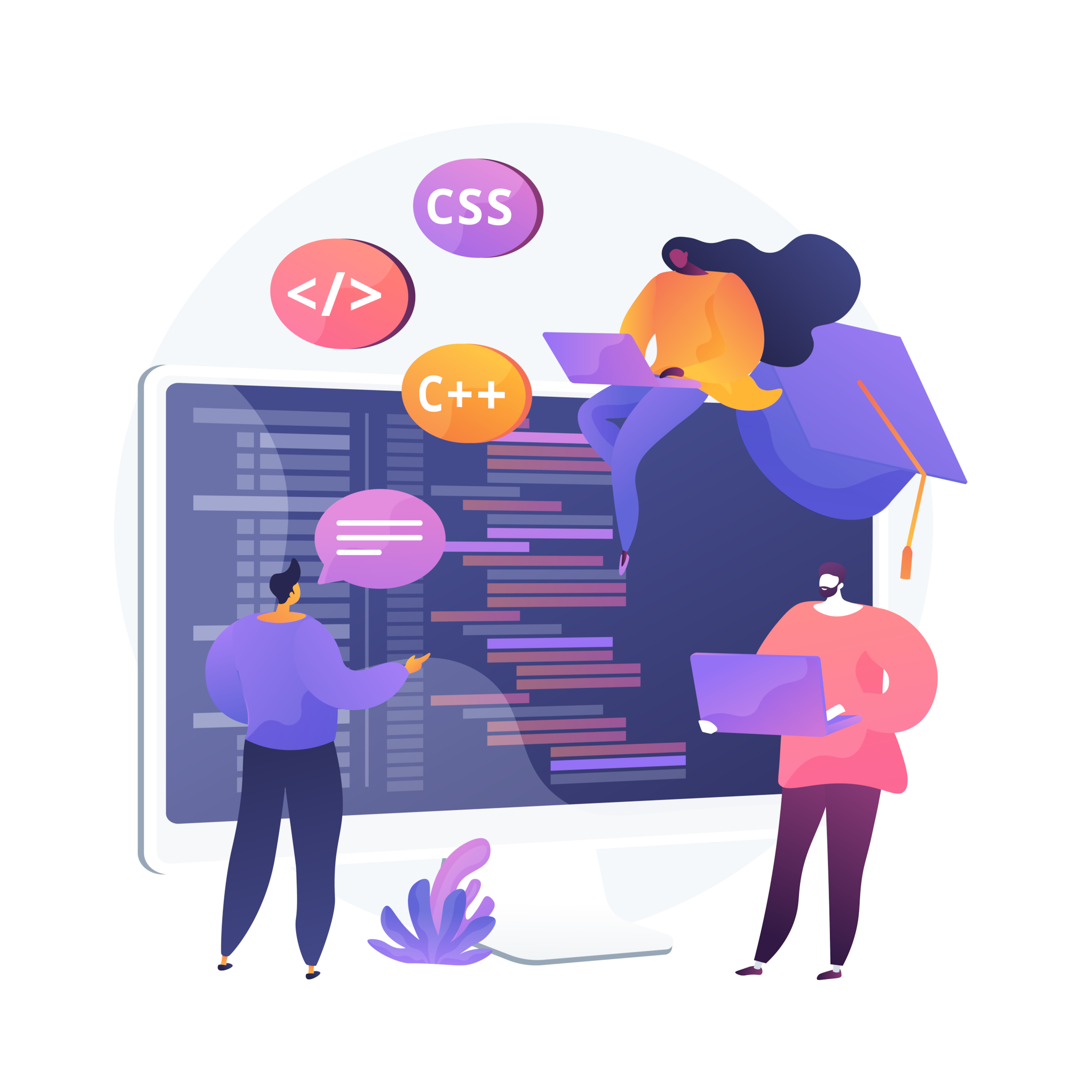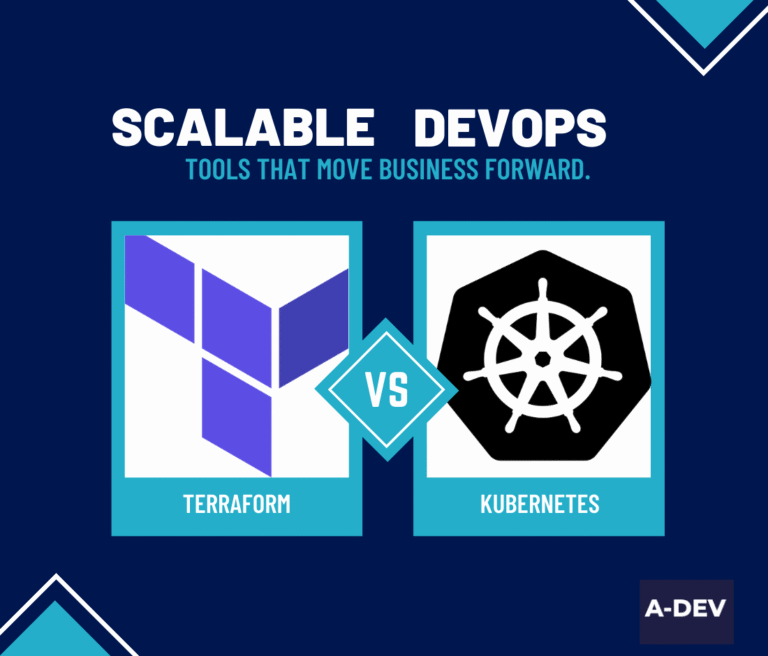This blog post explores the synergy between DevOps and security, how they can work together, and the benefits of this collaboration. We’ll delve into DevSecOps practices to achieve a secure and efficient development process.
The DevOps Advantage: Speeding Up Development
 DevOps is a set of practices that aims to bridge the gap between development and operations teams. This collaboration streamlines the software development lifecycle, leading to faster delivery of new features and updates. Here are some core DevOps principles that contribute to this speed:
DevOps is a set of practices that aims to bridge the gap between development and operations teams. This collaboration streamlines the software development lifecycle, leading to faster delivery of new features and updates. Here are some core DevOps principles that contribute to this speed:
- Continuous Integration and Continuous Delivery (CI/CD): Code changes are automatically integrated and tested frequently, allowing for faster feedback and deployment cycles.
- Infrastructure as Code (IaC): Infrastructure provisioning and configuration are automated using code, making deployments more consistent and repeatable.
- Collaboration and Communication: Development and operations teams work together throughout the process, breaking down silos and fostering a culture of shared responsibility.
- Automation: Repetitive tasks are automated, freeing up development teams to focus on innovation and core functionalities.
This focus on automation and streamlined workflows allows for faster development cycles. However, it’s crucial to remember that speed shouldn’t come at the expense of security.
Security Concerns in the Development Process
 Traditional development workflows, where development and operations operate in silos, can introduce security vulnerabilities. Here’s how:
Traditional development workflows, where development and operations operate in silos, can introduce security vulnerabilities. Here’s how:
- Security as an Afterthought: Security considerations are often bolted on at the end of the development process, leading to potential vulnerabilities that could have been prevented earlier.
- Manual Processes: Manual security testing and configuration management are prone to human error, which can create security gaps.
- Lack of Communication: With siloed teams, security concerns might not be effectively communicated between development and operations, leading to security blind spots.
- Slow Vulnerability Detection: Traditional security testing methods can be slow, delaying the identification and remediation of vulnerabilities.
These security concerns can lead to vulnerabilities in the final product, exposing applications and data to potential attacks. By integrating security throughout the software creation process, DevSecOps aims to address these issues.
Cloud Security: Considerations for the Modern Landscape
 The widespread adoption of cloud computing has revolutionized software development. However, cloud environments introduce unique security challenges that require careful consideration. Here are some key points:
The widespread adoption of cloud computing has revolutionized software development. However, cloud environments introduce unique security challenges that require careful consideration. Here are some key points:
- Shared Responsibility Model: Cloud providers manage the underlying infrastructure security, but the responsibility for securing data and applications deployed on the cloud lies with the customer.
- Increased Attack Surface: Cloud environments can have a vast and complex attack surface due to the distributed nature of resources and the potential for misconfiguration.
- API Security: Cloud services rely heavily on APIs for communication, which creates new entry points for attackers if not properly secured.
- Data Privacy Regulations: Data stored in the cloud may be subject to various privacy regulations, requiring organizations to implement robust data security measures.
These challenges highlight the importance of integrating security into cloud-based DevOps pipelines. By incorporating security best practices throughout the development pipeline, organizations can build secure and compliant applications for the cloud.
Bridging the Gap: Introducing DevSecOps
 DevSecOps stands for Development, Security, and Operations. It’s a cultural shift and a set of practices that aims reduce potential risks throughout the entire software development lifecycle (SDLC).
DevSecOps stands for Development, Security, and Operations. It’s a cultural shift and a set of practices that aims reduce potential risks throughout the entire software development lifecycle (SDLC).
Traditionally, security was often an afterthought, bolted onto the software build process at the end. This led to vulnerabilities and delays. DevSecOps flips this approach, with the core philosophy being: Security is everyone’s responsibility.
Here’s how DevSecOps fosters collaboration between development, operations, and security teams:
- Shared Ownership: DevSecOps breaks down silos and encourages all teams to work together as one unit. Security becomes an integrated part of the development pipeline, not a separate hurdle.
- Shift Left Security: Security testing and vulnerability scanning are no longer limited to the final stages of development. DevSecOps advocates for “shifting left” by integrating security practices earlier in the SDLC, allowing for earlier detection and remediation of vulnerabilities.
- Communication and Transparency: DevSecOps emphasizes open communication and transparency between teams. Security findings are shared promptly, allowing developers to address them quickly.
- Automation: Repetitive security tasks are automated, freeing up security professionals to focus on more strategic initiatives and collaborate with development teams.
DevSecOps is a powerful approach to achieving both speed and security in software development. But how do you actually implement it within your organization? To help you navigate this process, we’ve created a comprehensive guide outlining a successful DevSecOps implementation roadmap.
The Role of Security Teams in DevSecOps
 Security teams play a vital role in DevSecOps by leveraging their expertise to guide and empower development and operations teams. Here’s how they contribute:
Security teams play a vital role in DevSecOps by leveraging their expertise to guide and empower development and operations teams. Here’s how they contribute:
- Security Champions: Security team acts as champions for security best practices within the DevSecOps environment. They provide training, guidance, and resources to development and operations teams on secure coding practices, threat modeling, and DevOps best practices.
- Threat Detection and Mitigation: Security teams bring their expertise in threat and vulnerability detection and management. They help identify potential cybersecurity risks early in the software creation process and collaborate with developers to implement effective mitigation strategies.
- Security Automation and Tooling: Security experts play a key role in selecting and implementing security tools that automate tasks like code scanning, vulnerability assessments, and penetration testing. This frees up developer time and allows for faster feedback on cybersecurity issues.
Shifting from Gatekeeper to Enabler:
Traditionally, security teams were often seen as a roadblock, responsible for identifying and halting development due to security concerns. In DevSecOps, there’s a crucial shift in this mindset. Instead of security being a roadblock, DevSecOps transforms security teams into collaborators. They work hand-in-hand with developers to bake safeguards directly into the software from the very beginning. This proactive approach keeps development cycles humming while minimizing vulnerabilities.
By working together and sharing knowledge, DevSecOps allows security teams to be more proactive and have a greater impact on the overall vulnerability profile of the organization.
DevOps Security: Building Security In, Not Bolting It On
 DevSecOps fosters a collaborative environment where Dev and Ops teams work together to integrate security and create robust software. Here are some key practices that empower this approach:
DevSecOps fosters a collaborative environment where Dev and Ops teams work together to integrate security and create robust software. Here are some key practices that empower this approach:
- Secure Coding Practices: Developers are trained and encouraged to write fortified code by following best practices like proper input validation, secure data handling, and avoiding common coding vulnerabilities.
- Static Application Security Testing (SAST): Automated tools are used to scan code for security vulnerabilities early in the software build process. This allows developers to identify and fix vulnerabilities before code is deployed.
- Infrastructure as Code (IaC) Security Scanning: Security checks are integrated into the IaC pipeline to ensure that infrastructure configurations are secure and compliant with best practices.
- Secret Management and Access Control: Credentials, encryption keys, and other sensitive information are securely stored and managed. Access to these resources is strictly controlled using the principle of least privilege.
- Continuous Security Monitoring: DevSecOps tools are used to monitor applications and infrastructure for suspicious activity in real-time. This allows for early detection and response to potential security incidents.
- Security Automation: Repetitive cybersecurity tasks like vulnerability scanning and configuration checks are automated to free up security teams and developers to focus on more strategic initiatives.
By implementing these practices, organizations can build a security-first culture within their DevOps environment. This not only improves the overall vulnerability profile of the software but also helps to streamline the development workflow by catching vulnerabilities early and avoiding delays.
Integrating Security into Your DevOps Workflow

DevSecOps isn’t about a complete overhaul of your existing development workflow. Instead, it’s about strategically integrating DevOps security techniques throughout the DevOps pipeline. Here’s a high-level overview:
- Shift Left Security: Start thinking about security early. Implement cybersecurity testing, such as SAST, into the development phase. SAST tools can scan code for vulnerabilities as developers write it, allowing for faster identification and remediation.
- Vulnerability Management: Establish a process for identifying, prioritizing, and remediating vulnerabilities throughout the development lifecycle. Automate vulnerability scanning throughout the pipeline to ensure continuous monitoring.
- Secure Coding Practices: Train developers on secure coding practices to help them write code that is less susceptible to vulnerabilities. This includes techniques like input validation, secure data handling, and following secure coding guidelines.
- Secure Configuration Management: Use Infrastructure as Code (IaC) tools to automate infrastructure provisioning and configuration. Integrate checks throughout the infrastructure as code (IaC) pipeline to ensure deployed infrastructure follows best practices for reliability and resilience.
- Continuous Monitoring: Implement security monitoring tools to track application and infrastructure activity for suspicious behavior. This allows for early detection and response to potential risks.
Remember, DevSecOps is an ongoing process. As you integrate these practices, continuously evaluate and refine your approach to ensure optimal cybersecurity and development speed.
Best Practices for Secure DevOps (DevSecOps)
 DevSecOps fosters a culture of DevOps security throughout the development lifecycle. Here are some key best practices to achieve secure DevOps, along with a brief explanation of their role in the DevSecOps philosophy:
DevSecOps fosters a culture of DevOps security throughout the development lifecycle. Here are some key best practices to achieve secure DevOps, along with a brief explanation of their role in the DevSecOps philosophy:
1. Embed Security Throughout the Pipeline (Shift Left Security):
- Integrate DevSecops testing tools like SAST and DAST early in the software developing process.
- This allows for early detection and remediation of vulnerabilities, preventing them from persisting into later stages.
2. Prioritize Secure Coding Practices:
- Train developers to write secure code from the beginning.
- This proactive approach reduces the attack surface and minimizes the introduction of vulnerabilities in the first place.
3. Implement Vulnerability Management as a Continuous Process:
- Establish a system for identifying, prioritizing, and remediating vulnerabilities throughout the development lifecycle.
- Automate vulnerability scanning across code, infrastructure, and container images to ensure continuous monitoring and timely patching.
4. Secure Infrastructure with Infrastructure as Code (IaC):

Source: Freepik
- Leverage IaC tools to automate infrastructure provisioning and configuration in a secure manner.
- Integrate security checks into the IaC pipeline to identify potential misconfigurations before deployment.
5. Enforce Least Privilege with Secure Access Control:
- Securely store and manage credentials and other sensitive information.
- Implement access control mechanisms that grant users only the permissions they need to perform their tasks (Principle of Least Privilege).
6. Maintain Continuous Monitoring for Early Threat Detection:
- Implement monitoring tools to track application and infrastructure activity for suspicious behavior.
- Utilize Security Information and Event Management (SIEM) tools to collect and analyze logs, allowing for early detection and response to potential security incidents.
7. Automate for Efficiency and Scalability:
- Automate repetitive security tasks like vulnerability scanning, configuration checks, and security testing.
- This frees up security teams and developers to focus on more strategic initiatives and allows for faster feedback on security issues.
8. Foster a Culture of Security Awareness and Training:
- Regularly educate and train all development, operations, and security personnel on security best practices, threat awareness, and incident response procedures.
- A well-informed workforce is essential for identifying and mitigating security risks throughout the DevSecOps process.
By following these best practices and continuously refining your DevSecOps approach, organizations can achieve a secure and efficient software production. Remember, DevSecOps is a collaborative effort – effective communication and shared responsibility between development, operations, and security teams are essential for success.
Conclusion: Achieving Security and Speed with DevSecOps

This blog post explored the synergy between Security and DevOps, highlighting the potential pitfalls of traditional development workflows and the advantages of DevSecOps. We discussed key DevSecOps principles like integrating DevOps security techniques throughout the development lifecycle and fostering collaboration between development, operations, and security teams.
Here are the key takeaways:
- Security is not an afterthought: DevSecOps emphasizes building security into the software development process from the beginning, leading to more secure applications.
- Collaboration is key: DevSecOps breaks down silos and encourages collaboration between teams, fostering a shared responsibility for security.
- Automation is essential: Automating repetitive security tasks streamlines the development process and frees up teams to focus on more strategic initiatives.
- Shift left security: Identifying and fixing vulnerabilities early in the development cycle prevents them from persisting into later stages and causing delays.
By adopting DevSecOps principles and best practices, organizations can achieve significant benefits:
- Faster development cycles: Streamlined workflows and automated DevOps security checks lead to faster development and deployment of fortified software.
- Improved security posture: Proactive security practices throughout the development lifecycle result in more secure applications with fewer vulnerabilities.
- Enhanced collaboration: DevSecOps fosters a culture of collaboration and shared responsibility, leading to a more efficient and secure development process.
DevSecOps is not just a set of tools; it’s a cultural shift that prioritizes security throughout the development lifecycle. By embracing this approach and staying informed about emerging trends, organizations can deliver secure software faster and more efficiently, gaining a competitive edge in today’s ever-evolving threat landscape. The world of DevSecOps is constantly evolving, with new trends and best practices shaping the future of secure development. To stay ahead of the curve, explore the latest DevSecOps trends. This article provides valuable insights into what’s on the horizon for DevSecOps, helping you optimize your development process for both speed and security.






